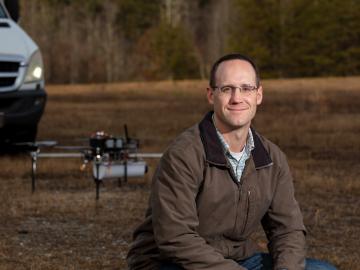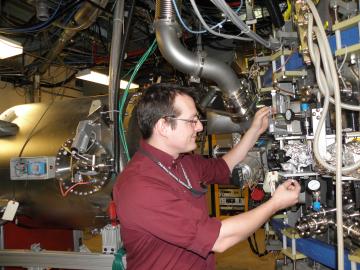
Filter News
Area of Research
- (-) National Security (34)
- (-) Nuclear Science and Technology (11)
- Advanced Manufacturing (6)
- Biology and Environment (63)
- Building Technologies (2)
- Computational Biology (2)
- Computational Engineering (3)
- Computer Science (15)
- Electricity and Smart Grid (3)
- Energy Science (127)
- Energy Sciences (1)
- Functional Materials for Energy (1)
- Fusion and Fission (27)
- Fusion Energy (15)
- Isotopes (1)
- Materials (54)
- Materials for Computing (15)
- Mathematics (1)
- Neutron Science (22)
- Quantum information Science (7)
- Sensors and Controls (2)
- Supercomputing (144)
News Topics
- (-) Big Data (6)
- (-) Computer Science (21)
- (-) Frontier (1)
- (-) Fusion (9)
- (-) Grid (6)
- (-) Security (11)
- (-) Summit (2)
- 3-D Printing/Advanced Manufacturing (6)
- Advanced Reactors (12)
- Artificial Intelligence (12)
- Bioenergy (4)
- Biology (5)
- Biomedical (4)
- Biotechnology (1)
- Buildings (1)
- Chemical Sciences (2)
- Coronavirus (3)
- Cybersecurity (19)
- Energy Storage (2)
- Environment (6)
- Exascale Computing (1)
- High-Performance Computing (4)
- Isotopes (5)
- Machine Learning (12)
- Materials (2)
- Materials Science (6)
- Molten Salt (4)
- Nanotechnology (1)
- National Security (35)
- Neutron Science (9)
- Nuclear Energy (40)
- Partnerships (5)
- Physics (3)
- Quantum Science (1)
- Simulation (1)
- Space Exploration (5)
- Transportation (2)
Media Contacts

A team of collaborators from ORNL, Google Inc., Snowflake Inc. and Ververica GmbH has tested a computing concept that could help speed up real-time processing of data that stream on mobile and other electronic devices.

Deborah Frincke, one of the nation’s preeminent computer scientists and cybersecurity experts, serves as associate laboratory director of ORNL’s National Security Science Directorate. Credit: Carlos Jones/ORNL, U.S. Dept. of Energy

Six ORNL scientists have been elected as fellows to the American Association for the Advancement of Science, or AAAS.

The combination of bioenergy with carbon capture and storage could cost-effectively sequester hundreds of millions of metric tons per year of carbon dioxide in the United States, making it a competitive solution for carbon management, according to a new analysis by ORNL scientists.

The inside of future nuclear fusion energy reactors will be among the harshest environments ever produced on Earth. What’s strong enough to protect the inside of a fusion reactor from plasma-produced heat fluxes akin to space shuttles reentering Earth’s atmosphere?

Horizon31, LLC has exclusively licensed a novel communication system that allows users to reliably operate unmanned vehicles such as drones from anywhere in the world using only an internet connection.

Lithium, the silvery metal that powers smart phones and helps treat bipolar disorders, could also play a significant role in the worldwide effort to harvest on Earth the safe, clean and virtually limitless fusion energy that powers the sun and stars.

From materials science and earth system modeling to quantum information science and cybersecurity, experts in many fields run simulations and conduct experiments to collect the abundance of data necessary for scientific progress.

Juergen Rapp, a distinguished R&D staff scientist in ORNL’s Fusion Energy Division in the Nuclear Science and Engineering Directorate, has been named a fellow of the American Nuclear Society

Temperatures hotter than the center of the sun. Magnetic fields hundreds of thousands of times stronger than the earth’s. Neutrons energetic enough to change the structure of a material entirely.


